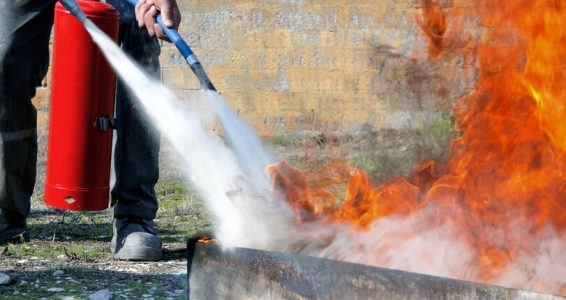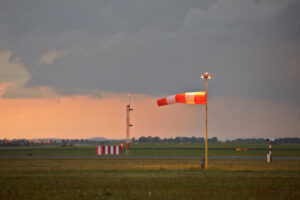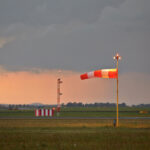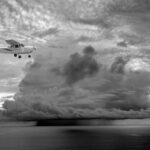Classes of Fire and the Fire Extinguishers to Fight Them
Not much would be more terrifying than smoke or fire on an aircraft in flight. Your options are limited, and the correct extinguisher must be readily available to fight the class of fire that is burning. For this reason, pilots and cabin crew must be familiar with the different classes of fires and portable fire extinguishers that are effective against each type of fire.
Classes of Fires
There are five classes of fires. The class of fire will determine which type of extinguisher is safest to use.
- Class A: Involve combustible carbon-based solids such as wood, textiles, or paper.
- Class B: Involve flammable liquids such as oil-based paints, grease, diesel, oil or paraffin, and gasoline.
- Class C: Are caused by energized electrical equipment, as in appliances, tools, or equipment plugged into a wall outlet.
- Class D: Are caused by burning metals, such as lithium, magnesium, cloth, or aluminum.
- Class K: Usually start in the kitchen with burning fats, vegetables, and cooking oils.
Types of Fire Extinguishers and Their Uses
Understanding the correct use of each type of fire extinguisher is crucial for safety and effectiveness in combating different classes of fires.
Water Fire Extinguishers
- Description: Use water as the extinguishing agent. They work primarily by cooling the fire down.
- Suitable For: Class A fires involving ordinary combustibles like wood, paper, and textiles.
- Not Suitable For: Fires involving flammable liquids (Class B), electrical equipment (Class C), and flammable metals (Class D).
Foam Fire Extinguishers
- Description: Contain a foam solution that smothers the fire, cutting off the air supply.
- Suitable For: Class A and B fires. They are effective on liquid fires like petrol or diesel by forming a barrier between the fuel surface and the air.
- Not Suitable For: Electrical fires (Class C) unless specifically designed for another type of fire.
Dry Powder Fire Extinguishers
- Description: Use a fine powder to smother the fire and interrupt the chemical reaction.
- Suitable For: Class A, B, and C fires. Versatile for use on combustible materials, flammable liquids, and electrical fires.
- Specialized Use: Some dry powders are suitable for Class D fires involving flammable metals.
Carbon Dioxide (CO2) Fire Extinguishers
- Description: Displace oxygen with carbon dioxide gas, effectively smothering the fire.
- Suitable For: Class B and C fires. They are ideal for electrical fires due to their non-conductive properties.
- Not Suitable For: Class A fires, as CO2 does not cool the fire, and Class D fires.
Wet Chemical Fire Extinguishers
- Description: Contain a potassium solution that cools and emulsifies the burning oil.
- Suitable For: Class K fires involving cooking oils and fats. Effective in commercial kitchens.
- Not Suitable For: Fires involving flammable liquids and gases (Class B and C) or electrical fires.
How To Use a Fire Extinguisher
To use a fire extinguisher properly, remember the word PASS: Pull, Aim, Squeeze, and Sweep.
- Pull the Pin, hold the nozzle away from you, and release the locking mechanism.
- Aim low, pointing the extinguisher at the base of the fire, not on top of the flames.
- Squeeze the lever slowly and evenly.
- Sweep the nozzle from side to side in an even motion.
Most airplanes will need onboard protection from almost all types of fires except for burning fats and grease. It is very important to do a thorough preflight of each extinguisher on board as well as to be very familiar with each class of fire and the appropriate portable fire extinguisher to be used in each situation.
RELATED CTS TRAINING
RELATED CTS TRAINING









